The watermelon plant, with its sweet and refreshing taste, has become a beloved summertime treat for people around the world.
Its vibrant red flesh and juicy texture make it a staple at picnics, barbecues, and family gatherings. However, behind the scenes, watermelon plant cultivation requires careful attention to the various watermelon growing stages.
Knowledge of the different watermelon growth stages empowers farmers, gardeners, and enthusiasts to optimize their efforts and ensure a bountiful harvest of ripe watermelons. Each stage brings unique challenges and requirements, from seed selection and germination to vine growth, flowering, and fruit set.
By familiarizing ourselves with these growth stages, we gain insights into the specific needs of watermelon plants and can provide the ideal conditions for their growth.
Whether you are a seasoned farmer, a backyard gardener, or simply curious about the life cycle of this delicious fruit, this article will explore the different watermelon growing stages.
Let’s dive in!

Watermelon Growing Stages | In-Depth Analysis of Growth Stages!
There are about eight watermelon growing stages.
The watermelon plant’s life cycle includes seed selection and preparation, seed germination, seedling development, vine growth, flowering, fruit development, ripe fruit formation, and post-harvest stages.
Each of these watermelon growing stages has its own requirements. You must move adeptly to ensure you get great fruits after all the hard work.
The growth begins with seed selection and preparation, followed by seed germination, where favorable conditions such as temperature and moisture prompt the emergence of seedlings. The seedlings then progress into the vine growth stage, during which proper training and pruning techniques are employed for optimal growth. As the plant matures, it enters the flowering stage, where male flowers and female flowers bloom. The male flowers transfer pollen to female flowers, leading to subsequent fruit development.
Patience is required during this period as the watermelon plants gradually grow in size and undergo fruit ripening, ultimately determining the ideal time for harvest.
Now, let’s get into the details of these stages and their specific requirements.
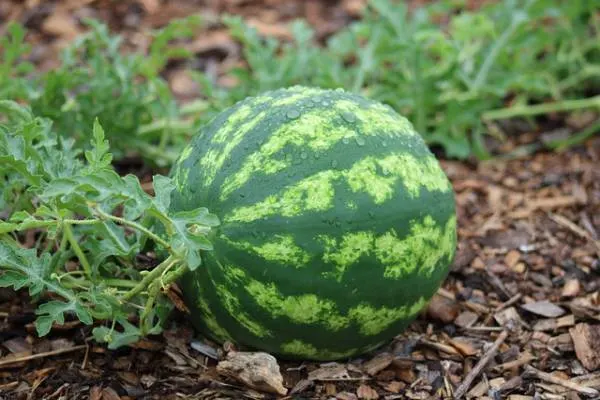
Stage 1: Seed Selection and Preparation Stage
Selecting high-quality seeds is essential for ensuring healthy and productive watermelon plants.
When growing watermelons, choose watermelon seeds with the following characteristics:
Variety: Consider the specific watermelon variety that suits your growing conditions, climate, and desired taste. Different watermelon plant varieties have varying sizes, colors, and maturation periods.
Seed Quality: Opt. for viable seeds from reputable suppliers or trusted sources. Look for plump seeds, uniform in size and without cracks or damage.
Disease Resistance: Some watermelon plant varieties are bred to resist specific diseases. Consider choosing seeds with resistance to common watermelon diseases prevalent in your area.
Preparing the Planting Area
Before planting watermelons, preparation of the planting area sets the stage for successful watermelon growth.
Consider the following steps:
Soil Preparation: Choose a well-draining soil with a pH range of 6.0 to 7.5. Remove weeds, rocks, and debris, and incorporate organic matter such as compost or aged manure to improve soil fertility and structure.
Site Selection: Choose a location that receives full sun exposure, as watermelons require at least 6-8 hours of direct sunlight daily for optimal growth and fruit development.
Related Article: How to Grow Watermelons in Container? 6 Tips for Success (growgardener.com)
Spacing and Bed Preparation: Determine the appropriate spacing between plants based on the specific watermelon variety. Keep the plants on raised beds to improve drainage.
Soil Testing: Conduct a soil test to assess nutrient levels and pH. Based on the test results, you can amend the soil with specific nutrients or adjust pH if necessary.
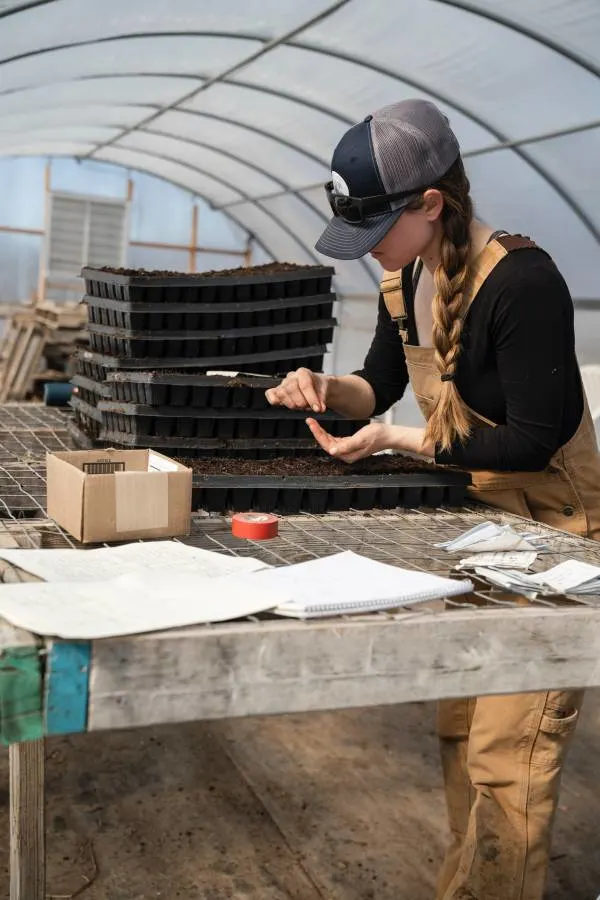
Stage 2: Seed Germination
Watermelon seeds can be planted directly into the ground or started indoors for later transplantation.
Plant seeds at a depth of about 1 inch (2.5 cm) in well-draining soil, spacing them according to the specific watermelon variety’s recommendations.
Ideal Germination Conditions
Watermelon seeds require specific conditions for successful germination. Optimal germination conditions include a soil temperature between 75-85°F (24-29°C) and consistent moisture. Keep the soil moist by watering gently, ensuring it remains moist but not soggy.
Watermelon seeds typically germinate within 7-10 days, but this can vary based on temperature and seed quality.
Signs of successful germination include the emergence of seedlings with cotyledons (the first seed leaves). Once the cotyledons appear, true leaves will follow, indicating that the seedling is growing and ready for the next stage of development.
Stage 3: Seedling Stage
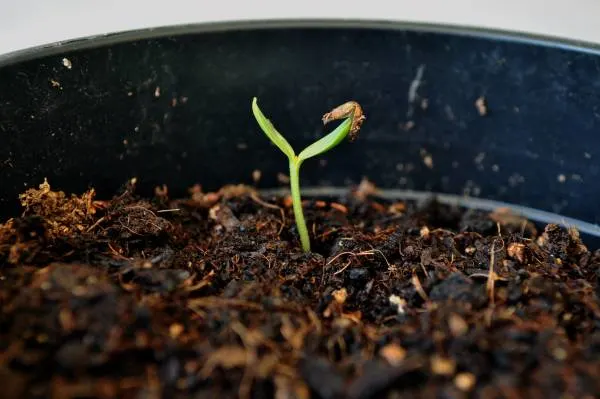
During the seedling stage of watermelon growing stages, the young plants develop their cotyledons and true leaves, establishing their initial growth.
Providing proper care and maintenance is important to ensure healthy seedling development.
Development of Cotyledons and True Leaves
Cotyledons are the first leaves to emerge from a germinating watermelon seed. These initial leaves nourish the young plant until the true leaves develop.
True leaves, which follow the cotyledons, resemble the mature leaves of the watermelon plant and are crucial for photosynthesis and further growth.
Care and Maintenance of a Watermelon Seedling
Here are a few tips for taking care of your seedlings:
Watering and moisture control
Seedlings require consistent moisture for healthy growth. Water them carefully, avoiding overwatering or letting the soil dry out completely. Maintain moist but not saturated soil conditions, ensuring adequate drainage to prevent waterlogged roots.
Providing adequate sunlight or artificial light
Watermelon seedlings need ample sunlight to thrive. Place them in a location that receives full sun exposure. If growing indoors or in low-light conditions, supplement with artificial lighting, such as fluorescent or LED grow lights, to provide sufficient light intensity and duration.
Temperature requirements
Watermelon seedlings prefer warm temperatures for optimal growth. Maintain a temperature range of around 70-85°F (21-29°C) during the day and slightly cooler temperatures at night. Avoid exposing the seedlings to frost or cold drafts, as they are sensitive to low temperatures.
Transplanting seedlings (if needed)
If starting the seeds indoors or in a controlled environment, seedlings may require transplantation into larger containers or the outdoor planting area. Transplant them carefully, taking care not to damage the delicate roots. Ensure the soil in the new location is well-prepared and enriched with organic matter.
Now, let’s move toward the fourth stage of watermelon growing stages.
Stage 4: Vine Growth
During the vine growth stage, watermelon plants focus on developing their vegetative growth, including expanding leaves, stems, and tendrils.
This vigorous growth is essential for the plant’s overall health and the successful production of flowers and fruits.
Training and Pruning Techniques
Proper training and pruning techniques are crucial for managing watermelon vines effectively.
These techniques help control vine growth, promote air circulation, and improve sunlight penetration, ultimately enhancing fruit development.
Common techniques include:
Single stem training: Selecting a strong main stem and removing side shoots or suckers to maintain a single, dominant vine.
Trellising: Providing vertical support for the vine to climb helps maximize space utilization and keeps the fruits off the ground.
Pruning lateral branches: Removing excessive lateral branches that may compete for nutrients and limit airflow.
Other Tips
Here are a few tips for you:
Soil fertility: Watermelons thrive in well-draining soil enriched with organic matter. Prioritize soil with a pH range of 6.0-7.5 for optimal nutrient availability.
Nutrient management: Apply a balanced fertilizer, such as one with an NPK ratio of 10-10-10, at regular intervals according to the specific fertilizer manufacturer’s instructions. Monitor the plant’s nutrient needs and adjust the fertilizer application as required.
Watering: Ensure consistent soil moisture, providing regular and deep watering when necessary. Try not to overwater to prevent rotting roots.
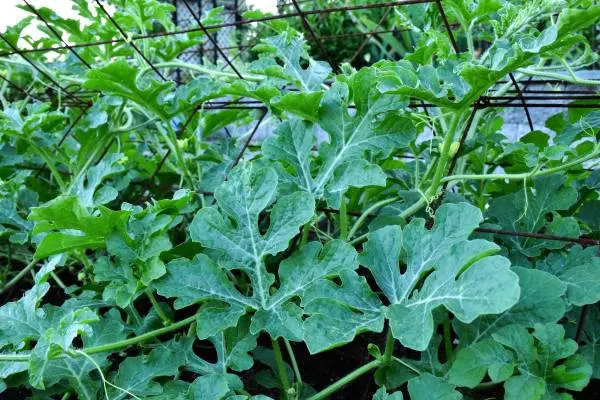
Now, let’s move toward the next stage.
Stage 5: Flowering Stage
Watermelon plants have separate male and female flowers.
Male flowers typically appear first, with a slender stem and pollen-producing stamen. On the other hand, female flowers have a small fruit attached at the base called an ovary.
Factors Affecting Flower Development and Pollination Success
Several factors can influence male and female flower development and pollination success:
Temperature and humidity
Optimal temperature and humidity conditions during the flowering stage promote better flower development and pollination. Extreme temperatures or high humidity can affect pollination success.
Availability of pollinators
The presence and activity of pollinators, such as bees, butterflies, and other insects, play a crucial role in successful pollination. Enhance their habitat to attract and support pollinators.
Time of day
Watermelon flowers tend to open in the morning and close in the afternoon. Pollination is most effective when flowers are open and receptive to pollen, so timing pollination efforts accordingly can improve success rates.
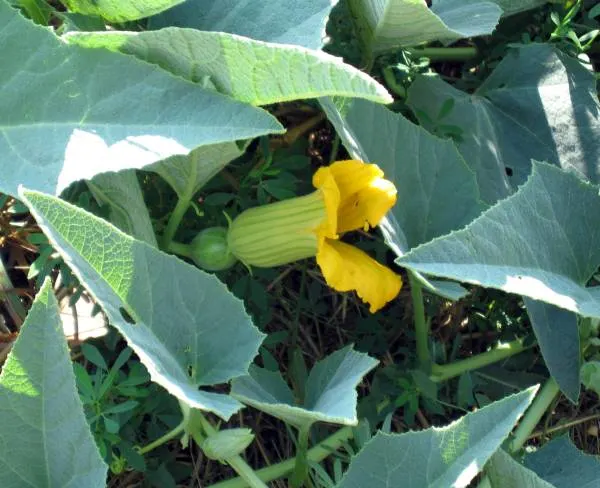
Let’s look at the sixth stage of homegrown watermelon plants.
Stage 6: Fruit Development
After successful pollination, watermelon fruits begin to develop.
The fertilized ovary of the female flower grows and starts to form the watermelon fruit. During this stage, it is essential to ensure optimal growing conditions, including adequate sunlight, proper nutrition, and sufficient water.
Keep a close eye on the size and maturity of the watermelon fruits. As they grow, monitor their size, shape, and color. Different watermelon varieties have varying maturity indicators, such as changes in rind color, surface texture, or a dulling of the fruit’s sheen.
Maintain regular watering to ensure the soil remains evenly moist but not soggy.
During this stage, focus on providing balanced nutrition, especially potassium and phosphorus, which are essential for fruit development and sweetness. Regularly apply a fertilizer specifically formulated for fruiting plants.
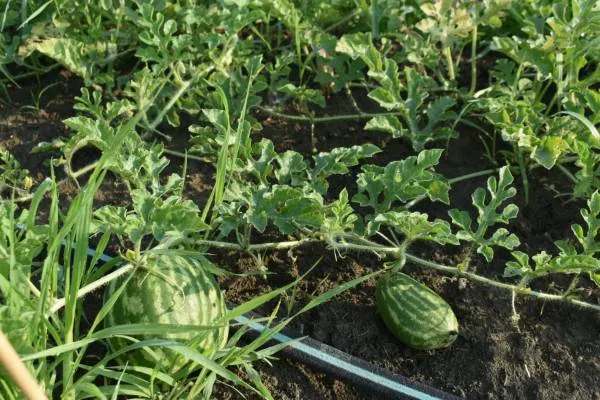
Stage 7: Harvesting
Harvest watermelons carefully to avoid damage to the fruit.
To cut the stem cleanly, use pruning shears leaving a short stub attached to the fruit. Don’t twist or pull the watermelon from the vine, as it will cause stem detachment and potential damage.
Timing can vary depending on the variety and growing conditions, but generally, watermelons are ready for harvest when they reach full maturity on the vine.
Handle harvested watermelons with care to prevent bruising or injury. Place them gently in containers or baskets, avoiding stacking or piling excessive weight on each other.
Transport them to a cool and shaded area as soon as possible to maintain their quality and freshness.
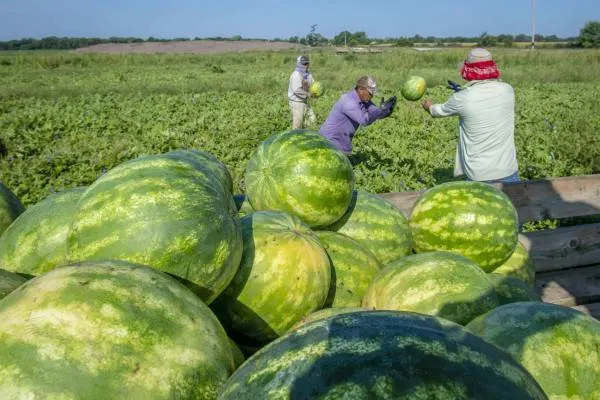
Stage 8: Drying
During this stage, the watermelon fruit starts to dry and lose moisture.
The outer rind may become tougher and less vibrant in color. Additionally, the seeds inside the fruit begin to dry out as well. This drying process is a natural part of the watermelon’s life cycle, indicating the completion of its growth and the plant’s progression toward dormancy.
As the watermelon dries, the plant’s energy shifts from active growth to seed maturation and eventual dispersal. It is at this stage that seeds can be collected for future planting.
The drying stage indicates that the watermelon has reached the end of its life cycle and is no longer suitable for consumption.
That’s all for today!
With all that said, let’s head toward the conclusion.
Conclusion!
I hope now you have a strong grasp over the watermelon growing stages.
Understanding the various stages of watermelon growth is crucial for successfully growing watermelons.
Each stage requires proper care, attention, and consideration of watering, nutrient management, temperature, and pollination.
Watermelon growing under optimal growing conditions, which meet the specific needs of watermelon plants at each stage, have a maximum chance of a bountiful harvest.
Remember to choose high-quality seeds, provide adequate sunlight, moisture, and nutrients, monitor fruit development, and harvest at the right time for optimal flavor and sweetness. With these tips and a little patience, you’ll be on your way to growing delicious and juicy watermelons in your garden.
Happy cultivating!
